Packaging upgrade for Chinese food producer
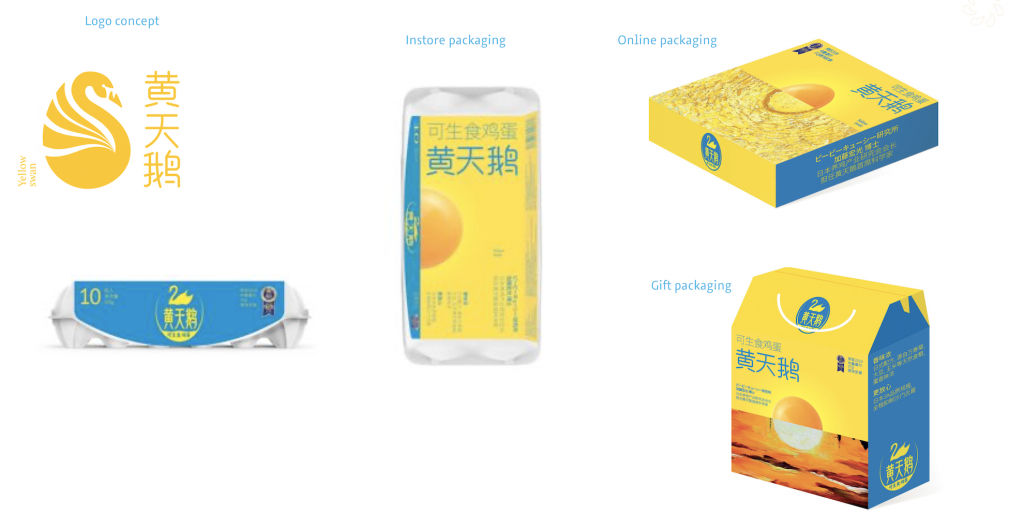
Packaging upgrade for Chinese food producer The Yellow Swan Share The Yellow Swan is a new Chinese food company committed to the highest quality standards of egg production. Building on the Japanese practice of eating raw eggs in the morning, Yellow Swan produces high quality eggs to be eaten raw. The company aims to build world-class high-quality egg leadership brand based on innovative technology, equipment, and production management models. 3 things to know Packaging design explores the core value of the brand The core value of the brand is quickly and immediately communicated to consumers through the packaging. Pictographic graphics logo design builds new brand identity We simplify the shape of swan and yolk to make it more friendly and geometric. Creative and easy to identify. Different sales platform use different packaging design We designed different packaging for different sales platforms to maintain the unity of the visual system. Gallery Egg box design Identity “Simply natural” concept “Safe and good to eat raw” concept “Swans in Chinese scenery” concept “Eat it raw” concept “Sunrise” concept In depth Service mix: Design thinking Business strategy design Description The project involved a concept development phase to solve specific packaging design needs of the brand. We developed 2 main packaging design concepts from supportive visuals and content to a precise brand message. The aim was to develop a concept that provides a distinct design solution and effortless effectiveness on multiple levels, is unique, and stands out from retail shelfs. Experientia redefined the overall brand visual identity and strategy in terms of brand’s core values, brand voice, and brand messaging architecture, and then developed the production ready design specifications of the instore, online and gift packaging. Related projects All Services Behavioral design Research and assessment Strategy Brand UX Qualitative research on food and drink consumption to develop new consumer services Brand UX Redesigning the visitors’ museum experience Go back to our portfolio
Redesigning the visitors’ museum experience
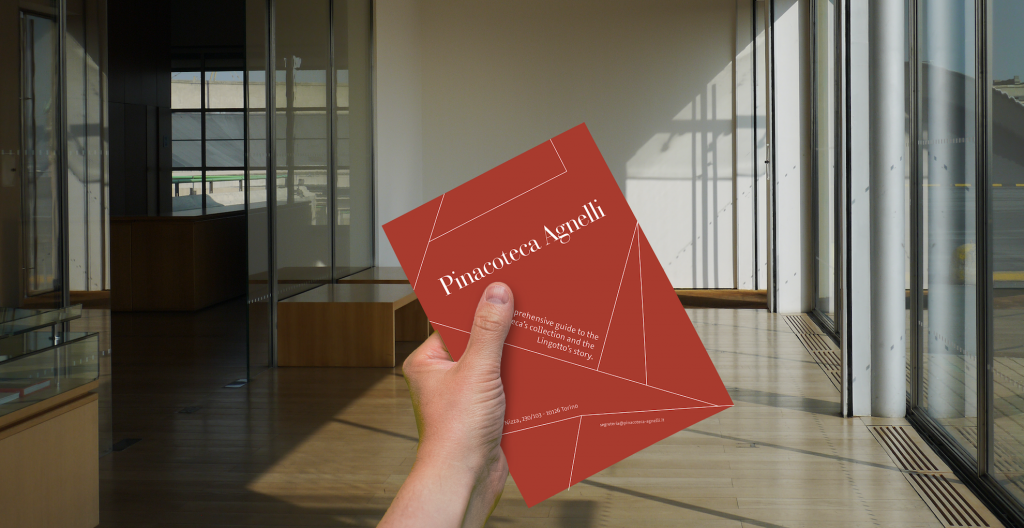
Redesigning the visitors’ museum experience Pinacoteca Giovanni e Marella Agnelli Share Reimagining and redesigning the museum experience that a visitor has through a careful analysis of the current pain points. 3 things to know Pain points of a visitor’s journey A systematic representation of an ordinary visitor’s journey that highlights the positive and negative aspects of the museum experience A concept for a new wayfinding system A proposal for the redesign of the elements that guide the visitors along the museum Ideas for a new museum experience A range of ideas that can improve the visitors’ experience, from redesigning spaces to offering new services. Gallery Take away navigation Informative facade Floor signage Signage The intensity of the visual elements becomes lighter going up Visitor journey map External view of the Renzo Piano designed museum In depth Service mix: Information architecture Service design Ethnography Context The art gallery, inaugurated in 2002, sits on the top floor of the Lingotto complex, the first FIAT factory and now a modern complex with concert halls, theatre, a convention centre, shopping arcades and a hotel. The Gallery contains a selection of works from the private collection of Gianni and Marella Agnelli. The collection is housed in the “jewellery box”, a steel body designed by Renzo Piano, with an area of 450 square meters raised 34 meters from the test track on the roof of the factory. Challenge The location within the Lingotto complex creates a multitude of wayfinding challenges for the visitor. The challenge was thus how to create a new visitor experience that helps guide visitors but also provides a new identity for the museum. Research Four colleagues explored and mapped the services provided by the Pinacoteca Agnelli. Only two were native Italian speakers. We collected experiences from people that visited Pinacoteca for the first time. This allowed us to create a systematic representation of an ordinary visitor’s journey that highlights positive and negative aspects of the museum experience. Design The design activities started with idea generation activities: we conducted several brainstorming sessions internally, merged the ideas that were similar, selected the most effective, and developed the most promising one in more detail. The next phase concentrated on developing a proposal for the redesign of the elements that guide the visitors along the museum, in other words a concept for a new wayfinding system. Following a process focused on the visitor experience, we took into account the visitors’ impression of the building to inspire the new design of the signage. A gradient recalls the experience that visitors have while going up the elevators: from a chaotic environment to a delightful and sophisticated art space. By using the shapes of the roof and the 5th floor we want to enhance the link to the architectural space by creating an echo of the structure inside the Pinacoteca Agnelli. We also developed a range of ideas that can improve the visitors experience, from redesigning spaces to offering new services. Impact The museum is in the process of implementing the Experientia design guidelines. Related projects All Services Behavioral design Research and assessment Strategy Brand UX Qualitative research on food and drink consumption to develop new consumer services Brand UX Packaging upgrade for Chinese food producer Go back to our portfolio
Qualitative research on food and drink consumption to develop new consumer services
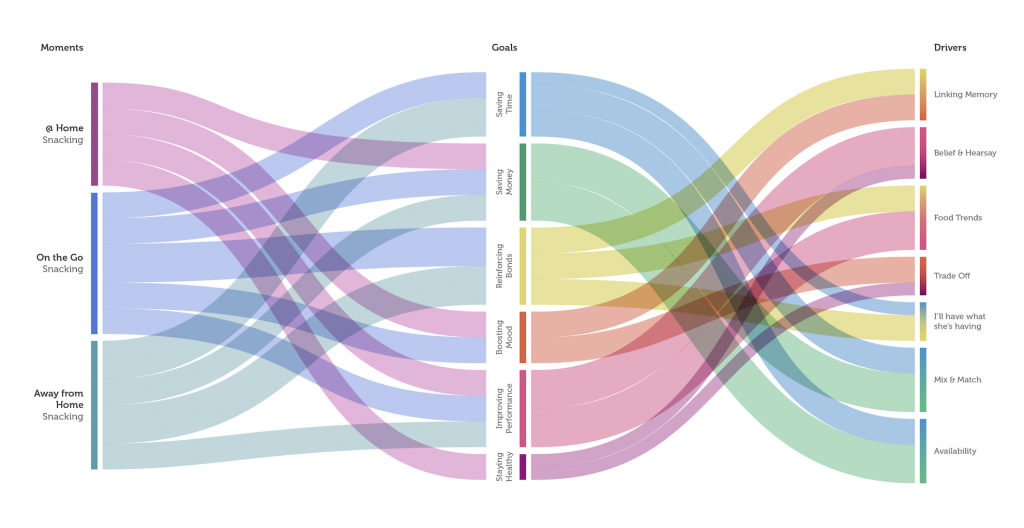
Qualitative research on food and drink consumption to develop new consumer services The Coca-Cola Company Share The Coca-Cola Company has very detailed marketing research, and decided to add to explore the role of ethnography as an additional method to help them identify and map external and internal triggers for beverage consumption. 3 things to know Ethnography as new method An additional method for the Coca-Cola Company to gain insight and explore opportunities. Instagram Participants are asked to take a pictures and describe what they are snacking during the day by receiving a message right before the foreseen snacking time. Insight visualization Strong emphasis on visualization to translate results into actionable opportunities. Gallery In depth Service mix: Design thinking Behavioral modeling Ethnography Context Consumption of food and drink can be tangential and fragmented in our rushed urban lives. The Coca-Cola Company wanted to understand better how to understand people’s behaviors and explore opportunities for new products or services. Challenge The Coca-Cola Company asked Experientia to support them in an ethnographic research project on snack time, that should also act as a learning opportunity for the company. Research Experientia conducted a qualitative research targeting young consumers to help the Coca-Cola Company identify triggers, behaviors and expected rewards in beverage consumption during snack time. The approach involved 9 contextual interviews, 10 hours of fieldwork observations and 4 digital diaries on Instagram accounts. Activities tools such as the routine map, the beverage cards and the packaging cards supported the researchers to collect data from participants’ stories. The insights have been later visualized in order to identify new opportunity areas for the Coca-Cola Company. Design Although mostly a research project, we explored design visualizations to help the company representatives better make sense of the results. Impact The results were presented during an internal workshop in Milan with marketing managers from across Europe, who then iterated on the topics identified, and matched them with their own data. Related projects All Services Behavioral design Research and assessment Strategy Consumer technology Buttonless: engaging users in interactions with keyless devices Consumer technologyFinance BancoSmart, an award-winning ATM Consumer technology Exploring urban dwelling usage to inform appliance design Go back to our portfolio
Mobile Privacy UX
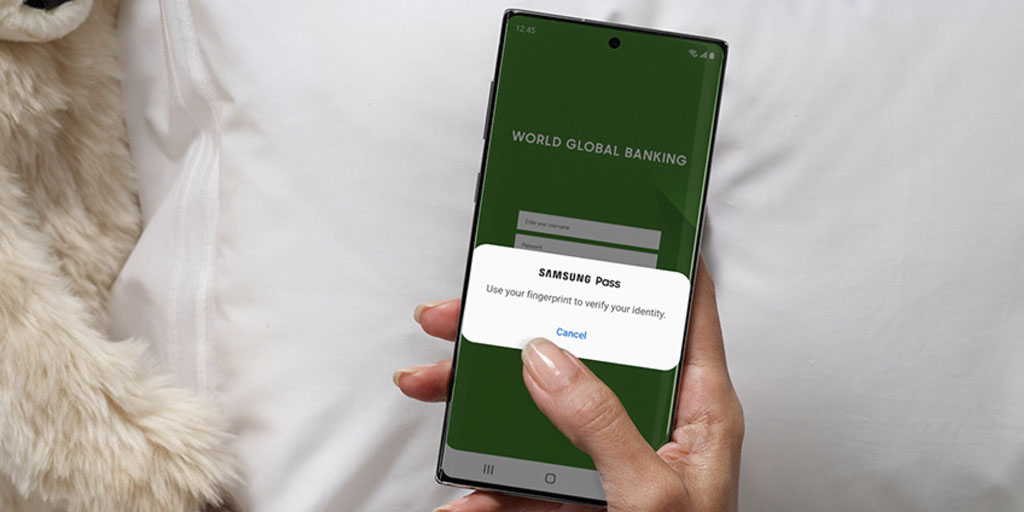
Mobile Privacy UX Samsung (South Korea) Share Experientia has worked for Samsung Electronics on a wide variety of projects since 2005 that covered different phases of their design process. This project was commissioned from Samsung South Korea and aimed to understand how users interpret privacy, both from a wide and narrow perspective, in order to support Samsung in the design of new privacy-related products and services. 3 things to know What users are talking about when they say “Privacy” For people privacy is an important good in itself.Privacy concerns are higher in a mobile ecosystem; to overcome this issue, companies have to rely on the trust that people grant them, and should aim to build stronger user confidence. Security and Privacy are different breeds The tech community has pushed a narrative where privacy is articulated as data security, which in turn gets translated in settings and features. This is challenging for people. Being comfortable with one’s own data What people share in the digital environment is tightly associated with the perceived risk of this action. The seriousness of risk is identified by two dimensions: the perceived distance of data disclosure consequences, and the affinity to people’s daily lives. Gallery What people share in the digital environment is tightly associated to the perceived risk of this action. How competitors address privacy Our approach Opportunity map In depth Service mix: Design thinking Ethnography Useful links: Link External link Context People who care about their privacy often feel that they are “forced” to disclose personal data, and are concerned that they don’t really know what they are really disclosing. To map this better, it’s important to start with the acknowledgement that peoples’ notions of privacy often differ significantly from how the industry and media approach this subject. Challenge Samsung asked Experientia to conduct a research to understand how users interpret privacy, in order to gain insights on users’ habits and concerns related to smartphone use, and to define UX solutions that tackle their pressing needs. Research Experientia conducted a thorough assessment of key privacy features in 3 devices. Social media listening shed light on the ongoing discussion about privacy on social media. We also interviewed users in different countries to collect a direct account of what they think privacy means for them and identify key aspects of people’s everyday life that are impacted by technology and how these aspects raise privacy safeguard concerns. The team finally engaged in conversations with experts to earn insights on broader privacy implications to add value to the research as they helped in identifying some crucial topics to discuss with users. Design Based on the fieldwork evidence, Experientia defined a privacy framework to synthesize how people address their privacy needs in the digital domain. The issues identified by researchers were re-formulated as “How might we…” questions. Experientia identified several high-level opportunities indicating possible alternative options to tackle each broader research-driven issue. Each issue with its challenge and connected recommendations was addressed by a set of opportunities indicating potential areas of intervention. Impact Experientia helped Samsung in better understanding privacy from peopler’s perspective and in defining human-centered design directions and actionable principles that could enhance the user experience addressing users’ pressing needs while simultaneously achieving two objectives: “make safe” and “feel safe”. Link External link Related projects All Services Behavioral design Research and assessment Strategy Consumer technology Buttonless: engaging users in interactions with keyless devices Brand UXConsumer technology European car aesthetics: Unveiling preferences and values Consumer technology Customer experience insights to innovation Go back to our portfolio
European car aesthetics: Unveiling preferences and values
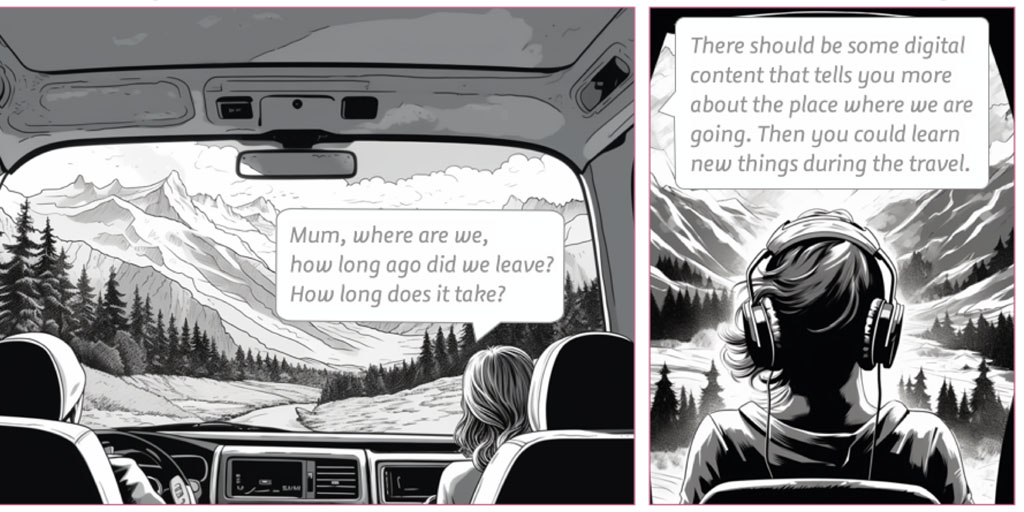
European car aesthetics: Unveiling preferences and values Client confidential Share In a moment of transition in technology and in the use of cars, new players appear on markets with established automotive manufacturers to offer innovative solutions. But how can you understand habits, preferences and values of new customers in order to make your new solutions more attractive? An Asian automotive company asked Experientia to explore the aesthetic tastes and mobility habits of European consumers developing evidence-based market segmentation. 3 things to know Quali-quantitative study By combining these two approaches, researchers could first explore and statistically validate the aesthetic preferences and trends through a large quantitative analysis, and then gain a deeper and more detailed understanding via a focused qualitative investigation. Personas, scenarios and VLOGs Quantitative survey and qualitative interviews categorized insights by assessing participants across dimensions like aesthetic taste, innovation openness, and choice drivers resulting in 12 personas. These personas were then linked to different scenarios, enabling a deeper exploration of individual attitudes and complexities. Additionally, 4 participants create 10-minute videos showcasing city life and aesthetics of 4 European cities, providing an intimate perspective on local culture and preferences. Large scale investigation The first part of the study was conducted on a large sample of participants across 10 European countries, while the second part involved a more detailed investigation in 4 of these countries conducted by local researchers. All the investigations were carried in the native language of each country. Gallery Car scenarios Car Persona – The sporty luxury lover Car 12 Personas Car aesthetic preferences Car Personas – love nest In depth Service mix: Design thinking Service design Ethnography Useful links: Link External link Context A major Chinese auto manufacturer was looking to expand its presence in the European market. To achieve this, they have commissioned Experientia to conduct a comprehensive study that focuses on exploring evolving preferences and environmental influences that shape the future lifestyle and aesthetic trends of mature automobiles among Europeans. Challenge The objective was to achieve a comprehensive understanding of potential European customers, exploring differences rooted in demographics as encompassing cultural backgrounds and personal aesthetic values. Research The first project phase included a quantitative survey, conducted with 300 individuals each in 10 European countries The second phase comprised qualitative research involving 20 interviews with five participants from four countries, conducted in the local language and complemented with city tours to deepen understanding of local culture and environments. The survey and interviews explored users’ aesthetic preferences and daily experiences. Design The gathered data enabled valuable modeling for product design, resulting in 12 personas defined by aesthetic preferences for cars and everyday items, as well as by lifestyle, demographics, mobility and purchase habits. Six scenarios highlighted each personas’ motivations and concerns about cars, while four vlogs portrayed mobility experiences of vloggers in four cities. These vlogs served to provide an aesthetic representation of diverse neighborhoods within four European cities. The intention was to offer aesthetic evidence of the urban environments, with the specific purpose of informing the design of products that will be tailored for these markets. Impact The results will be the base to improve product offerings, and enhance marketing strategies. Link External link Related projects All Services Behavioral design Research and assessment Strategy Consumer technology Buttonless: engaging users in interactions with keyless devices Consumer technology Mobile Privacy UX Consumer technology Customer experience insights to innovation Go back to our portfolio

